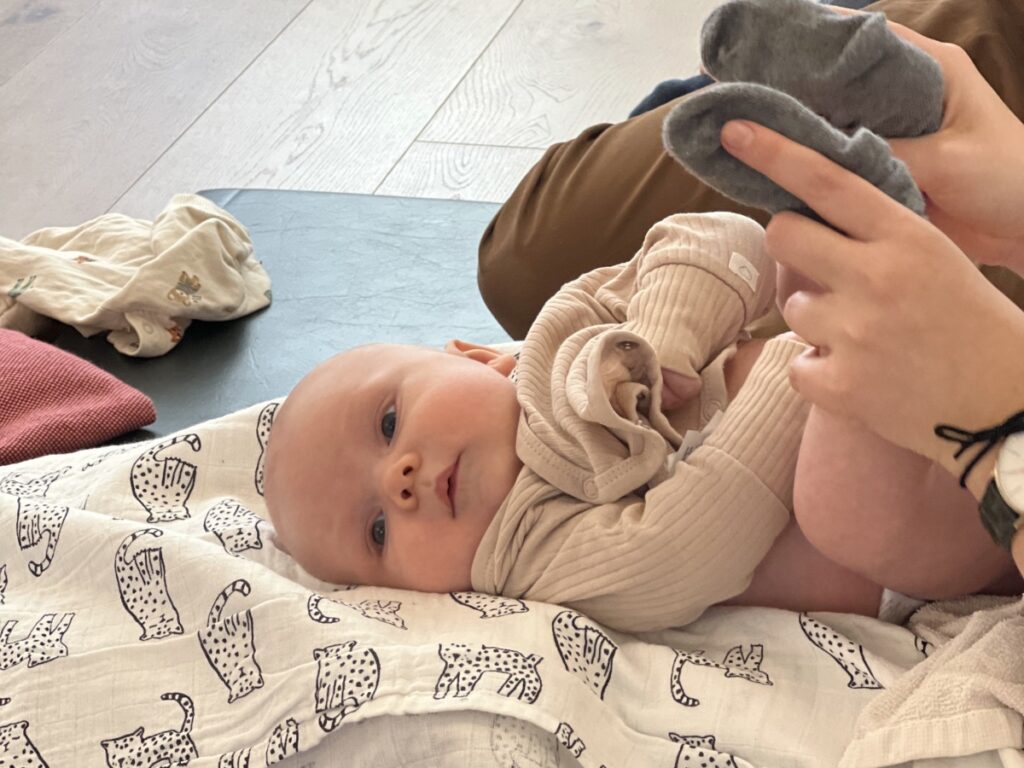
Oops, your baby has cramps! Two tips 🙂
Cramps – almost every baby experiences them at some point, and when your baby suffers, so do you.
Recently, during a baby massage session, I heard a mom sigh, “I wish I could help him.” It’s so hard as a parent to see, hear, and feel that your baby is in pain. That’s why I’d like to share three not-so-standard tips with you.
1. The first tip is preventive:
During every diaper change, do a little ‘exercise’ with |je baby. Move their legs in a clockwise motion, as this follows the natural direction of the intestines, where waste and air travel. Gently press your baby’s thighs toward their tummy, allowing their own legs to massage their intestines in the right direction.
Bend your baby’s knees either upward (toward their face) or outward (toward their armpits), but avoid lifting their bottom—keep their hips in contact with the changing surface. If your baby lifts their hips on their own, that’s fine, but don’t force it. Move along with your baby. If there’s resistance, pause, or even reverse the motion until your baby relaxes, then resume the clockwise motion.
If your baby stretches their legs, this can interfere with the indirect tummy massage. Be careful not to touch the soles of their feet, as this often triggers the stretch reflex. As your baby becomes familiar with the movement, you can use this technique when they experience cramps as well.
2. The second tip is for when your baby is already experiencing cramps:
You’re probably familiar with holding your baby in various positions, like upright over your shoulder or lying across your forearm. For this tip, it doesn’t matter how you’re holding them.
If your baby is crying, try shifting your focus from your baby to yourself. What’s happening in your own body? What’s going on with your breathing? Are you tensing up, holding your breath, or gripping tighter with your hands?
This is a natural reaction, but the more tense you become, the more your baby will mirror that tension. You might find yourselves caught in a cycle where your stress feeds theirs, and their crying escalates. Break the cycle by focusing on your own body (try a quick body scan like you practiced during pregnancy) or your breathing.
Focus especially on your exhale—the inhale will follow naturally. Relax your shoulders, jaw, mouth, and hips.
If possible, sit on a birthing ball with your baby in your arms (avoid bouncing). This can help you sit more grounded and relaxed, positively affecting your muscle tension and breathing—and, in turn, your baby. While this might not stop the crying immediately, it will help you step out of the negative cycle where crying leads to more crying.
Want to learn more, have more fun, and meet other parents?
Move with Your Baby is a course I personally developed, from the ground up—a pioneer of baby yoga and parent-child classes as we know them today. Together, we sing, dance, and explore lots of fun ways to support your baby’s development, with countless tips and tricks to make tummy time more enjoyable!
Baby Massage is a beautiful way to get to know your baby better, tune into their signals, and deepen your bond.

